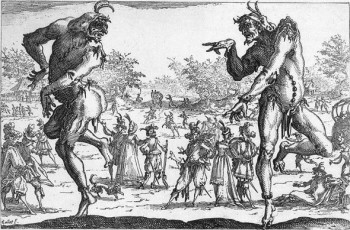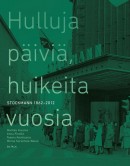Tag: business
Tuomo Pietiläinen & Tutkiva työryhmä [Research working group]: Wahlroos: epävirallinen elämäkerta [Wahlroos: an unofficial biography]
13 February 2014 | Mini reviews, Reviews
 Wahlroos: epävirallinen elämäkerta
Wahlroos: epävirallinen elämäkerta
[Wahlroos: an unofficial biography]
Helsinki: Into Kustannus Oy, 2013. 432 pp. , ill.
ISBN 978-952-264-243-1
€35, hardback
Björn Wahlroos (born 1952) is a business and banking executive who is now chairman of Nordea, the Nordic region’s largest bank. The journalist Tuomo Pietiläinen, working in collaboration with 25 students, has produced a biography of Wahlroos as part of a course in investigative journalism, without the involvement of the subject himself. Wahlroos is a firm believer in the hard market economy. Based on careful background research, this biography charts Wahlroos’s progress from boy scout to radical left-wing student, his conversion to capitalism and his rapid rise to become a popular professor of economics. In the 1980s Wahlroos moved to the banking sector and climbed to the top of Finland’s business elite. Outspoken, both admired and hated, he is also the owner of an estate with cultural and historical significance, where he works as a part-time farmer. His hunting partners include the King of Sweden. This account of Wahlroos’s colourful career is written clearly and informatively enough to be understood even by those who don’t know anything about business.
Translated by David McDuff
Art for art’s sake
8 June 2012 | Letter from the Editors

Art, entertainment for the elite? ‘The two pantaloons’ by Jacques Callot (1616). Etching, British Museum. Picture: Wikimedia
It is the necessity, or the obsession, of the present age to measure everything in monetary terms: to know as exactly as possible how much money something is capable of making for the owner of its ‘rights’.
This also applies to various fields of art: for example, a play is expected to make profit for its producers – today also in the case of ‘uncommercial’ institutions such as National Theatres. Seats must be sold; bringing in busloads of people is a must.
But the purpose of creating art is not to increase the GDP. Art is not useful, as theatre director and playwright Esa Leskinen argues in a recent essay (in Finnish only): ‘Art doesn’t aspire to anything. Art isn’t something that is consumed in order to gather the energy to go on working. The purpose of art is not to burnish the image of Finland or make people feel good. Art is radically other than the field of sense and utility in which our everyday world is located.
‘There is no sense in art. Art is no use.’
We agree. We also think that’s how it should be. More…
Markku Kuisma & al.: Hulluja päiviä, huikeita vuosia. Stockmann 1862–2012 [Crazy days, amazing years. Stockmann 1862–2012]
29 March 2012 | Mini reviews, Reviews
 Markku Kuisma & Anna Finnilä & Teemu Keskisarja & Minna Sarantola–Weiss
Markku Kuisma & Anna Finnilä & Teemu Keskisarja & Minna Sarantola–Weiss
Hulluja päiviä, huikeita vuosia. Stockmann 1862–2012
[Crazy days, amazing years. Stockmann 1862–2012]
Helsinki: Siltala, 2012. 532 p., ill.
ISBN 978-952-234-086-3
€37.90, hardback
Also available in English- and Swedish-language editions:
Crazy days, amazing years. Stockmann 1862–2012
Galna dagar, svindlande tider. Stockmann 1862–2012
The largest department store in the Nordic countries, whose current building was completed in 1930 to a design by the architect Sigurd Frosterus, is celebrating its 150th birthday. The Akateeminen Kirjakauppa (Academic Bookstore), owned by Stockmann, is the biggest bookshop in the Nordic countries. The shop founded by the German-born H.F.G. Stockmann has grown into an international business, trading in 14 countries (including Russia, where it has stores in St Petersburg and Moscow). Now quoted on the Finnish stock exchange, Stockmann, owned by a conglomerate of families and foundations, has survived recessions, financial crises and wars. In the 19th century Stockmann was considered an expensive shop for gentlefolk, but as a result of growing competition it has been forced to focus strongly on a diverse concept of service. For decades one of the capital’s best-known meeting places has been ‘under the clock’, outside the main entrance of the department store. The book’s writers are historians from various fields. The generously illustrated work offers new information about the history of trade and the city.
John Simon: Koneen ruhtinas. Pekka Herlinin elämä [The Prince of Kone. The life of Pekka Herlin]
15 January 2010 | Mini reviews, Reviews
 Koneen ruhtinas. Pekka Herlinin elämä
Koneen ruhtinas. Pekka Herlinin elämä
[The Prince of Kone. The life of Pekka Herlin]
Finnish translation of original English manuscript completed by various translators in collaboration with the author
Helsinki: Otava, 2009. 415 p., ill.
ISBN 978-951-1-23478-4
€ 33, hardback
Pekka Herlin (1932–2003) was the long-serving chairman of the board of the Kone lift and escalator company. During Herlin’s tenure, Kone completed a number of corporate acquisitions to become a major global corporation. John Simon, an American writer and researcher, takes an unusually honest and direct approach; the project was undertaken at the request of Antti Herlin, the current chairman of the board at Kone and son of Pekka Herlin. Pekka Herlin was known for being both gregarious and a cool-headed business strategist, but his irascible, unorthodox nature was familiar to many as well. Within his family he emerged as a tyrannical alcoholic with a severely disturbed personality, feared by his children. John Simon interviewed a great many people who knew Pekka Herlin personally, including members of Herlin’s immediate family. This biography was Finland’s best-selling non-fiction book in the autumn of 2009.
